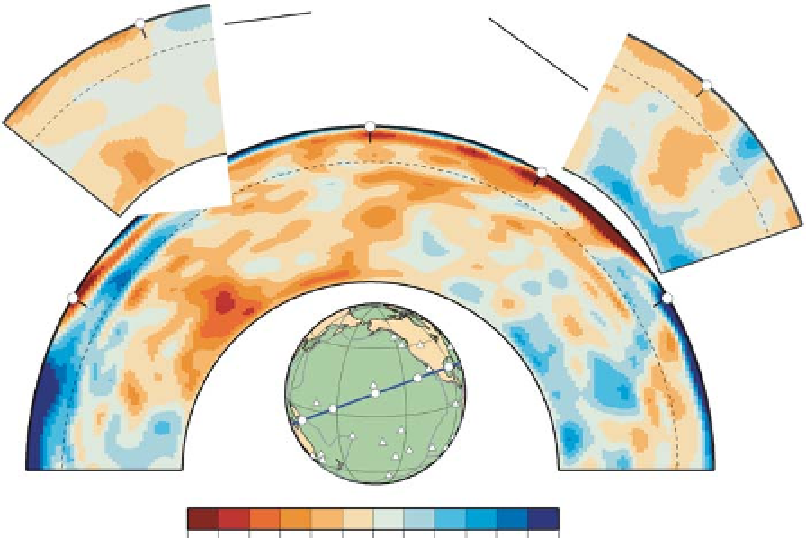Geoscience Reference
In-Depth Information
A tomographic test shows that the models have
reasonable bulk structure as well.
There are several improvements that can be
made. Even though it is unlikely that we can
do this type of modeling, at the same resolution
and convective vigor, in a full 3D spherical shell,
there are several improvements that can be made
to the 2D model and that will allow for useful
sensitivity tests. For example, the suggested im-
portance of grain-size dependent rheology (Hall
& Parmentier, 2003; Solomatov & Reese, 2008)
may be quite important in the enhancement of
isolated domains in the lower mantle. The sug-
gestion for melting in the transition zone (Jing
& Karato, 2009) and in an early basal magma
ocean (Labrosse
et al
., 2007) can be tested in
these models; a simple qualitative prediction is
that these processes would enhance and local-
ize stronger structural differences. While we take
into account the crustal extraction at subduction
zones we do not actually include continents as
dynamic features. Since continental covering is
likely to increase internal temperature and mix-
ing efficiency (Samuel
et al
., 2005) their presence
may further enhance the mixing in the upper
mantle.
An important structural improvement to
dynamical modeling is the use of compressible
convection (e.g., King
et al
., 2010; Deschamps
et al
., 2011). While the direct effects of com-
pressibility are modest (since the Earth is only
moderately
compressible),
the
treatment
of
Recovered velocity
perturbation from
Brandenburg model
S40RTS
shear velocity variation from 1-D
−
2%
+
2%
Fig. 12.7
Comparison of model predictions (insets) and a cross section through S40RTS across the Pacific centered
just south of Hawaii with an azimuth of 50N. The cross section goes through the Pacific super-'blob' structure on
the left and the Farallon subduction system on the right. The left insert shows the recovery from the dynamical
model through a large thermochemical region at the base of the mantle. The right insert shows the recover for a
region dominated by a downwelling. The seismic recovery from the dynamic model represents the tomographic
model reasonably well, except for the amplitude of the thermochemical region at the base of the mantle and the
degree of separation between upper and lower mantle. The latter may indicate stronger dynamical layering between
upper and lower mantle. (See Color Plate 15).

